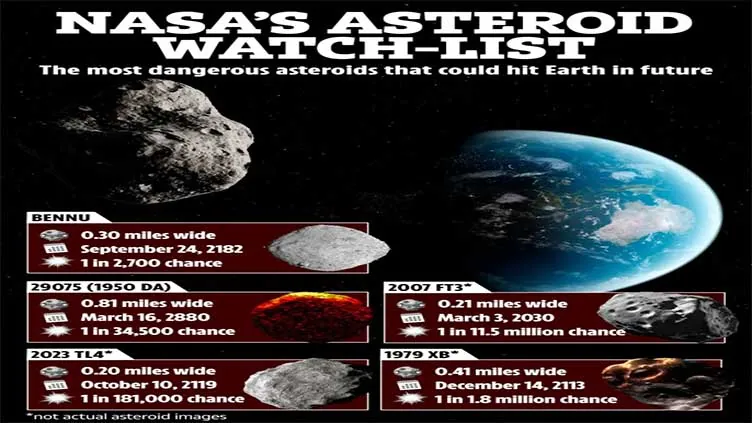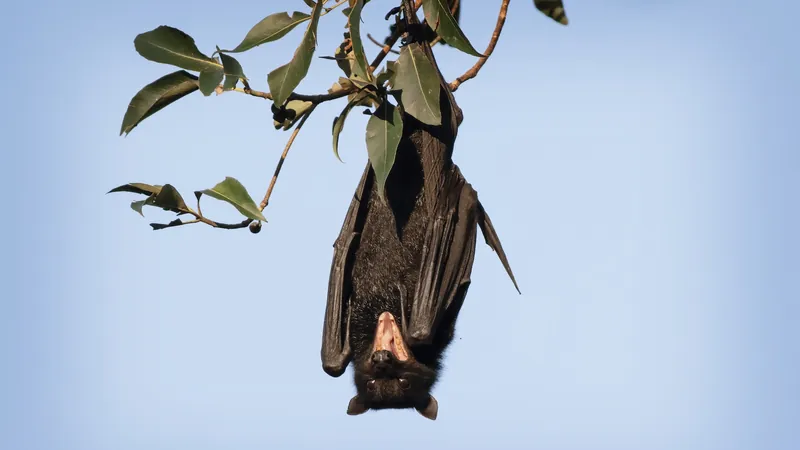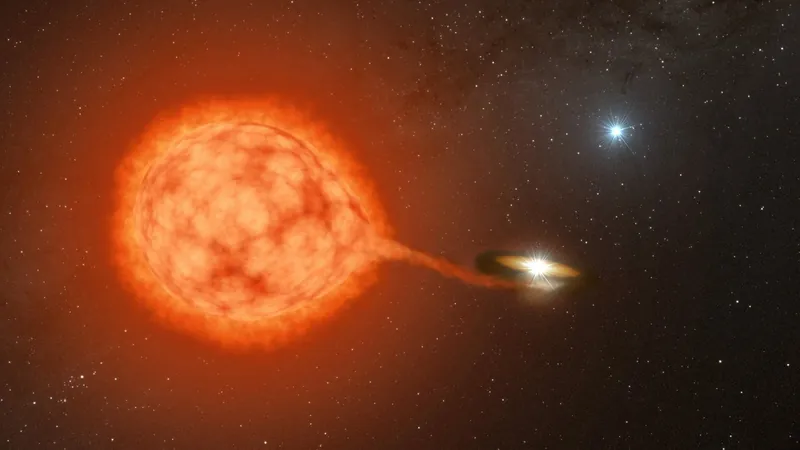
NASA Monitors Asteroids That Could Potentially End Life on Earth—Are We Prepared?
2024-09-23
Author: Ming
Asteroids loom large in our cosmic neighborhood, frequently flying past Earth, with some even making direct impacts. While most of these celestial bodies are too small to cause any significant threat—burning up upon entering our atmosphere—there have been catastrophic collisions in Earth's history. The last major event occurred approximately 66 million years ago when an asteroid is believed to have caused the extinction of the dinosaurs.
Despite the exceedingly low probability of a repeat occurrence, NASA and other space agencies are on high alert, continually scanning the skies for potential threats. They are also investigating innovative strategies, such as striking these massive rocks to alter their trajectories if one were ever to head our way.
Of the numerous asteroids monitored by NASA, several stand out due to their potential risk. Despite the statistics that follow, it’s crucial to emphasize that, currently, these asteroids are rated as having zero risk.
1. Bennu
Bennu is currently at the forefront of concern as it carries the highest risk of impacting Earth. However, the odds are favorable for us—there’s a 1 in 2,700 chance of it striking our planet on September 24, 2182. This 0.30-mile-wide asteroid, weighing 74 million tonnes, wouldn’t annihilate Earth but could be catastrophic if it were to hit in a populated area, releasing energy comparable to 1.4 billion tonnes of explosives. Excitingly, NASA successfully collected a sample from Bennu, which returned to Earth in September 2023 for analysis.
2. 29075 (1950 DA)
This asteroid, measuring 0.81 miles across and weighing 78 million tonnes, poses a more immediate high-risk scenario. If it were to collide with Earth, it could unleash the energy equivalent of 75 billion tonnes of TNT. Currently, there is a 1 in 34,500 chance that it could hit on March 16, 2880. Should that happen, it could spell disaster for human civilization.
3. 2023 TL4
At 0.2 miles wide and with a mass of 47 million tonnes, 2023 TL4 has a 1 in 181,000 chance of impacting Earth on October 10, 2119. If it were to strike, the impact would be devastating, comparable to the explosive force of 7.5 billion tonnes of TNT.
4. 2007 FT3
What makes 2007 FT3 particularly concerning is its potential path within our lifetime. Previous predictions had suggested an impact on October 5, 2023, but NASA has since ruled that out. The next significant risk would be on March 3, 2030, although the probability is low at 1 in 11.5 million. At 0.21 miles wide and weighing 54 million tonnes, it could cause regional devastation equivalent to 2.6 billion tonnes of TNT if it were to strike.
5. 1979 XB
This asteroid last made an appearance in 1979, and little is known about it due to the lack of observations. Estimated to be around 0.41 miles wide and weighing approximately 390 million tonnes, it carries a 1 in 1.8 million chance of impacting Earth on December 14, 2113. Such an impact would release energy equivalent to a staggering 30 billion tonnes of TNT.
As scientists continue to monitor these celestial giants, it’s evident that the threat of an asteroid strike, although statistically low, warrants our ongoing vigilance and preparation. NASA's proactive approach ensures that they are ready to take necessary actions if a potentially world-ending asteroid ever puts Earth in jeopardy. Are we doing enough to prepare for the unknown? The challenge remains on the horizon.




 Brasil (PT)
Brasil (PT)
 Canada (EN)
Canada (EN)
 Chile (ES)
Chile (ES)
 Česko (CS)
Česko (CS)
 대한민국 (KO)
대한민국 (KO)
 España (ES)
España (ES)
 France (FR)
France (FR)
 Hong Kong (EN)
Hong Kong (EN)
 Italia (IT)
Italia (IT)
 日本 (JA)
日本 (JA)
 Magyarország (HU)
Magyarország (HU)
 Norge (NO)
Norge (NO)
 Polska (PL)
Polska (PL)
 Schweiz (DE)
Schweiz (DE)
 Singapore (EN)
Singapore (EN)
 Sverige (SV)
Sverige (SV)
 Suomi (FI)
Suomi (FI)
 Türkiye (TR)
Türkiye (TR)
 الإمارات العربية المتحدة (AR)
الإمارات العربية المتحدة (AR)